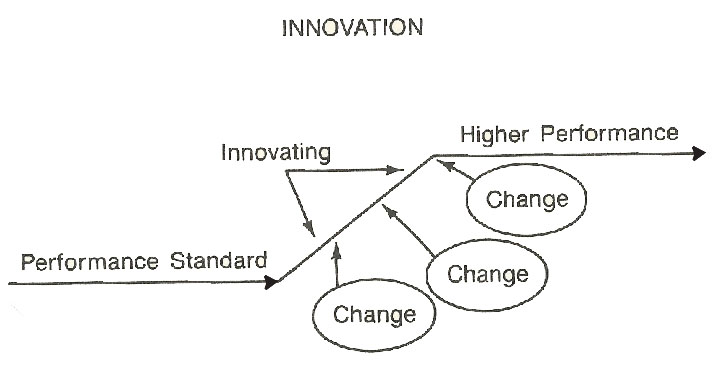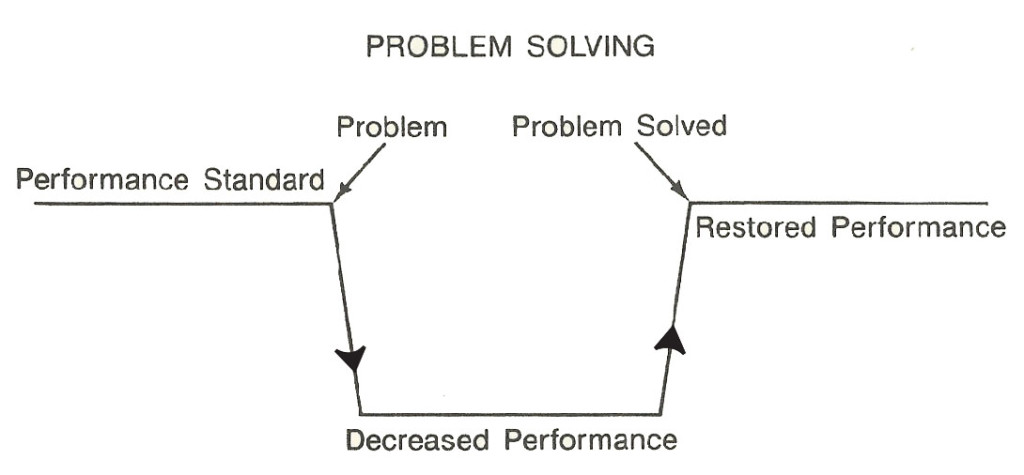Without an Innovation Process you are Searching for Gold without a Map or Compass!

Every opportunity I have, I ask business leaders if they have an official and documented process for innovation. The typical response I get leads me to a clear understanding that most people don’t!
What’s even more troublesome is that over half of them say they don’t really need an Innovation process…that they just “do it” when they need it and that’s perfectly fine. What these business leaders are really describing is probably just problem solving, not true innovation. Both are required in your organization but they are two entirely different mindsets requiring different thinking.
The difference is subtle and can make the difference between moving forward in a positive direction…or remaining mediocre and stagnate. Some background into the difference between problem solving and innovation is required to illustrate the point, so I will provide a quick comparison for you.
Problem Solving True Innovation
Reactive Proactive
Defensive approach Offensive approach
Based on Stability Based on Change
Risk reductions New Opportunities
Operational Efficiency Leadership Strategy

The list and figures above show clear distinctions between the two processes. The biggest difference is the change in performance level. So you can see that Innovation requires a different, and unique process, which may also include interconnected process elements or components.
Innovation is a repeatable business practice containing specific skills and thinking mindsets. It is not a homemade soup where you add a pinch of this and a pinch of that. Innovation requires a structured and disciplined sequence of steps that contains tools that can be used in each step.
Divergence ——–> Transformation ——-> Convergence
The above steps are interconnected and flow forward from a starting point using divergent thinking to a finish point using convergent thinking. Inside the flow between these two thinking elements, you must have a creativity step allowing a series of new ideas to evolve providing a transformation. Any Innovation process requires as a minimum these three steps.
Many Innovation processes contain 4 to 8 steps depending on their design thinking logic. The NOVATE process contains 6 steps with an interconnected flow that allows you to think forward, think backward and then continue to think forward again.
NOVATE Innovation Process
- Recognize – Identify a deficiency or problem.
- Discover – Explore previous design ideas or solutions to your problem.
- Pattern – Recognize and match similarities, commonalities or dis-similarities.
- Novate – Replace something with positive deconstruction and reconstruction.
- Evaluate – Combine idea solutions to create integrated design solutions.
- Implement – Create the proposed system containing all of the functionality.
- Linked Connections – Interconnected flow paths that illustrate a topographical view diagramming the flexibility of an innovation thinking network.
Too often business leaders use the term innovation as a path to the future for their companies. These same leaders don’t provide the tools, training and resources required to create a culture of innovation thinking. The people in these companies can only use the tools they have available.
The statement that opportunity only knocks once is wrong. Opportunity is always knocking, but you must understand what it looks like…feels like, sounds like, smells like and tastes like! So if you think you need to be in the right place at the right time, you are in trouble. You need to be in the right place all the time.
Innovation requires all of your senses and takes time for valuable ideas. Instant ideas take no practice, strategy or purpose. Innovation is occurring all around you on a daily basis, because change is happening around you constantly. True Innovation requires original thinking followed by measurement of the opportunities by pragmatic evaluation. This type of innovation process must have a filtering process to make intelligent choices about which opportunities to pursue. True Innovation processes check for strategic fits and are many times hard to implement. It requires both qualitative and quantitative evaluations blending subjective and objective thinking styles.
Leaders who embrace a True Innovation process are creating a roadmap to success one idea at a time. They have created a repeatable trail that leads from business survival to organizational preparedness for accelerating change. These Leaders recognize the role of true innovation, they have their people learn the process and skills of innovating, and apply innovative abilities on a regular, disciplined basis.
The next question is always so where do I start and HOW? The answer is a tough one because “It Depends” on where your organization and leadership team is starting at. As a minimum you must:
- Start the “Journey” – Get the word out that you are starting to identify an Innovation Process that will be used to create new business opportunities. Tell everyone!
- Obtain Executive sponsorship
- Establish and provide a dedicated budget for “Innovation”
- Identify an “Innovation Process” that fits
- Establish a Quantitative and Qualitative Measurement of ideas
- Create an Innovation Business Scorecard with “KPI’s”
- Identify and embrace a set of creativity and new thinking tools
- Train your employees on the use of these tools
- Measure the “ROI’s” for Innovation
- Share & Recognize the Successes and Failures
- Verify & Validate Stakeholder Innovation Expectations
- Continue Innovation Process Improvements
For many organizations to start the Process of Innovation, it will require them to create an ‘Enterprise” wide Innovation initiative that establishes an Idea Management System. In this system, you will need to break your organization apart into multiple systems and create multiple Innovation Process efforts for different areas. The advantage of a “Process” is that it can be mapped, measured, optimized and continuously improved.
It’s hard to do this right, but if you really believe that Innovation is your path to the future, you need an Innovation Process to get there.
References
- TOP 10 Reasons Why We Need INNOVATION by Lorraine Yapps Cohen http://www.aca.cloverpad.org/Resources/Documents/Cohen-TOP%2010%20Reasons%20Why%20We%20Need%20INNOVATION.pdf
- NOVATE – http://www.ideanovate.com/index.html
- The Innovation Formula – http://www.amazon.com/The-Innovation-Formula-Organizations-Opportunity/dp/0887304001/ref=sr_1_1?ie=UTF8&qid=1394326755&sr=8-1&keywords=the+innovation+formula


